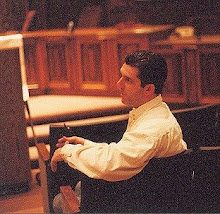Promised to write about a loan program you’ve never heard of. So here we are.
A couple weeks ago I sat with a lender and he told me about a program they are importing from overseas. Apparently, outside the US, the standard 30-year amort (why 30 years? Why not 25? Or 40?) is not the dominant force it is here. Out there, people get variable loans at a much higher rate than they do in the United States. Interestingly, one does not hear about how German consumers are going to destroy their economy by getting adjustable mortgages, but I digress.
Last time I posted a question – how important is your interest rate, and offered an analysis of some answers. Bottom line for most people – the rate matters far, far less than they think. Yet the #1 question I get asked is not – hey, Jones, what’s the lowest payment I can get borrowing $200k? – but “so, what are rates right now?”
Example #1: the payment (on a 30-year loan) is the same for $150,000 at 9% as it is for $200,000 at 6%. So is the rate more important than the loan size? No. But most people think they know the loan size going in. Most people are wrong.
Example #2: the payment on $200,000 is about the same at 6% and 7% if the 7% loan is amortized at 40 years and the 6% at 30. But I’m not going to live in my house for 40 years, you say. No, you’re not. You’re not going to live in it for 30 years either, though, are you?
What if you could make the interest rate matter even less? What if you could change your outstanding loan amount every month – even every day? What if your interest rate was not calculated as an amortized loan over 30 years, but computed like a credit card – based on your average daily balance for the month, with simple interest?
Well, there’s a loan like that. What most people are doing with it is depositing their paychecks directly into the loan every time they get paid. But you can’t do that, you say, because you need that money to pay bills. So you do. This loan lets you write checks (it even comes with a debit card) to cover them. As long as you do not exceed your loan limit, you can do what you want with the rest. Interest is calculated on your average daily balance, not on your loan limit. So most people are paying interest on $2000 less than other people with traditional loans of the same amount – just for a few days. Then it’s $1400 less. Etc. Another check comes, and the loan drops another $2000. Goes back up. And so on.
But what if, like me, you happen to be a business owner? And what if your business sometimes puts $15,000 through in a month? What if you’re a builder, and you put $50,000 through? Or $100,000? We have a builder we’re working with that has $150,000 in his business checking account right now. Just in case. His mortgage is $165,000. He’s paying $1100 a month in interest. When we finish the refinance, he’ll be paying about $175/mo. And if he ever needs the money, he can get it.
What this means is that the average Joe, just by changing where his paycheck is deposited, can cut 7 years off his loan, and save tens of thousands in interest.
The industry has been searching for a way to make mortgages a part of the savings programs of Americans instead of a drain. This loan, for many, many people, is the answer.
Now, it won’t work for everyone. You have to have good credit and you have to have some equity in your property. But if you do…
Email me or call me at 801-310-3407 if you want to talk about it. You’ll be glad you did.




